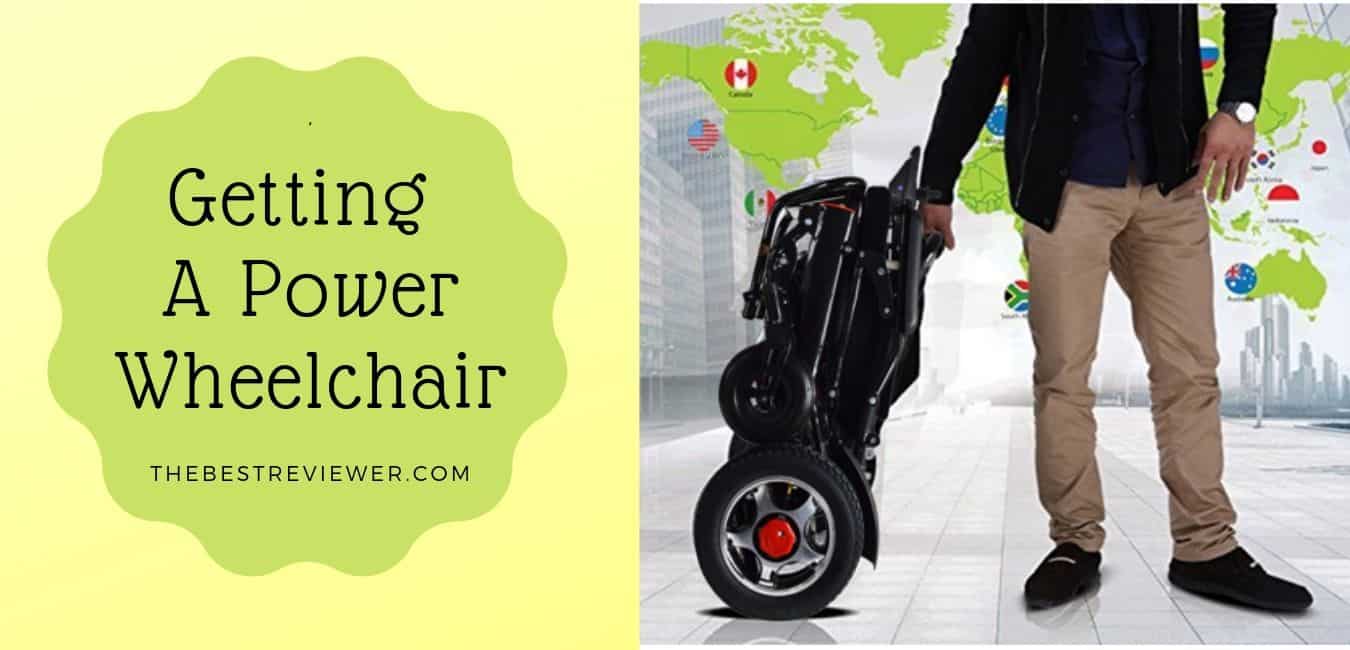If you are looking for a power wheelchair, you need to determine the specific tasks you need it to do. The most important consideration, of course, is that it moves about well.
To know what will work for you, two things you have to consider are the size and weight of the user. This is important since The client’s weight is a major factor in determining the speed and range of the power wheelchair.
Basically, the less you weigh, the better range you will get. If you are on the heavier side, a smaller and slimmer wheelchair may not provide the power and range you require.
By definition, a travel chair that folds, or a small light has small batteries, because the bigger power wheelchairs are heavy and require larger batteries.
Small batteries mean a lower cap on the maximum speed the power chair can produce. The occupant’s own weight factors in to affect the chair’s range and performance.
A third consideration is where you will be using your power chair. A smooth, flat surface is the easiest to navigate with a smaller wheelchair. If in your daily life you generally meet up with rougher terrain, that will mean that a larger model is a wiser choice for you.
While lighter chairs may appeal, heavyweight chairs may feel more comfortable on rougher pavements.
Contents
Hoveround Wheelchairs:
The Hoveround brand offers many choices. It is a superb choice for power chairs. Its products fit easily through doorways and hallways. The Hoveround line of power chairs include a tote bag as well as a convenient cup holder.
Models support up to 600 pounds. Hoveround provides custom fitting and training by one of its own specialists. Free delivery is included.
Hoveround offers six unique power chairs from which to choose. Each model aims to improve mobility. The wheelchairs are simple to operate, comfortable, easily maneuverable, and very reliable.
- The popular MPV5 model gas a weight capacity of 300 pounds. It’s speed in 5 miles per hour.
- The TEKNIQUE FWD is highly maneuverable, and comes with the color options of Black, Teal, Blue, Purple, Red, or Yellow.
- The TEKNIQUE RWD boasts a stable rear wheel drive performance.
- The TEKNIQUE GT has a higher ground clearance of nearly five feet, for more stability.
- The TEKNIQUE XHD model has an extra powerful drive motor with support for more robust frames of up to 450 pounds.
- Finally, the TEKNIQUE HD6 option offers an extra powerful drive motor with support for bariatric frames of up to 600 pounds.
Battery ranges of all Hoveround power wheelchair models are 15 – 20 miles. Hoveround mobility specialists and the patient’s doctor can help determine the power chair most suitable for your individual needs.
Components of All Power Wheelchairs
The evolution of the wheelchair is astounding and shares little resemblance to the first illustrated wheelchair which is in a portrait of King Phillip II of Spain in 1595. In 530 BC, there are records of Greeks who placed wheels on beds in order to transport the disabled.
In 525 AD, the Chinese attached wheels to chairs and various cultures have tinkered with the wheelchair ever since.
Serious production of the wheelchair commenced in the late 19th century when push rims were added for self propulsion and when wire-spoked wheels replaced wooden wheels.
The first motorized wheelchairs were built in 1918. Herbert B. Everest, a paralyzed miner, who developed the first folding wheelchair along with his friend Harold C. Jennings, a mechanical engineer.
By the 1970’s many manufacturers began to mass produce lightweight, foldable aluminum wheelchairs.
As the Baby Boomers come of age and as the global trend for overweight populations continues to increase, the wheelchair industry can only be described as booming.
Fortunately, today’s technology has provided power wheelchairs that can provide a mobile solution for just about any disability.
The Parts of the Power Wheelchair
There are two types of power wheelchairs; lightweight and heavyweight. Every power wheelchair has six components.
Frame – Most power wheelchairs are not foldable although some manufacturers do produce a foldable power chair. The use of strong, sturdy lightweight materials has greatly reduced the weight of the chairs.
The Control System – The purpose of the control system is to control the speed, the braking and turning abilities of the chair. The most common control systems are operated with a joystick, although options like push buttons, voice control and computerized head-chin are offered.
Brakes – The braking system is controlled by the controller. Brakes usually lock themselves when the chair is stationary or in the off position.
As the user will discover, there are many computerized programs that can be customized to fill a need. Manufacturers will work closely with purchasers to come up with a highly personalized power wheelchair that can dramatically improve the user’s quality of life.

